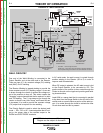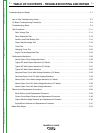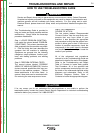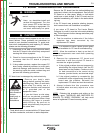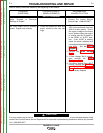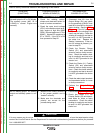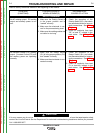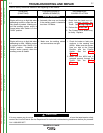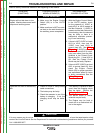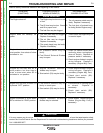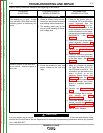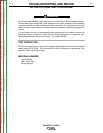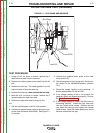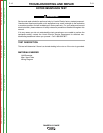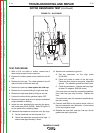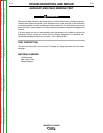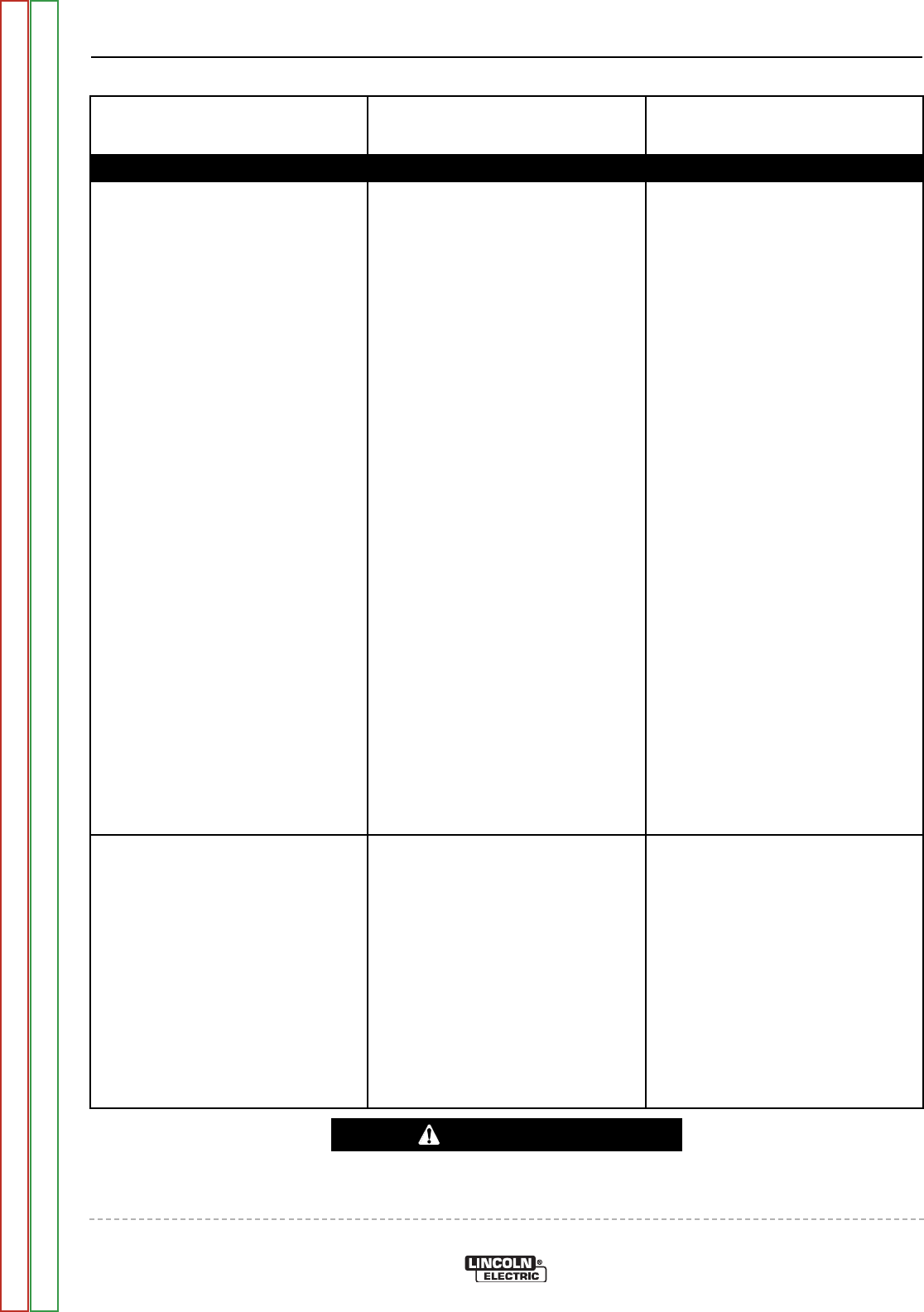
ENGINE PROBLEMS
Observe Safety Guidelines detailed in the beginning of this manual.
PROBLEMS
(SYMPTOMS)
POSSIBLE AREAS OF
MISADJUSTMENT(S)
RECOMMENDED
COURSE OF ACTION
If for any reason you do not understand the test procedures or are unable to perform the tests/repairs safely,
contact the Lincoln Electric Service Department for technical troubleshooting assistance before you proceed.
Call 1-888-935-3877.
CAUTION
TROUBLESHOOTING AND REPAIR
F-8 F-8
RANGER® 3 PHASE
Engine will not idle down to low
speed. Machine has normal weld
output and auxiliary power.
1. Make sure the Engine Control
Switch (S3) is in the “AUTO”
position.
2. Make sure there is NOT an exter-
nal load on the weld terminals or
the auxiliary power receptacles.
1. With the Engine Control Switch
in the “AUTO” position, check
for the presence of 12VDC at
leads #213 to #215 located at
the Idler Solenoid. If 12VDC is
present and the Idler Solenoid is
not activating, then the solenoid
may be faulty or there is a
mechanical restriction prevent-
ing it from functioning.
2. If there is NOT 12VDC at leads
#213 to #215, then test for
12VDC from lead #213 to
ground (lead #5). See Wiring
Diagram. If 12VDC is present,
then check lead #215 for conti-
nuity (zero ohms) from the Idler
Solenoid to the Printed Circuit
Board plug 3J1. If lead #215 is
OK, then the Printed Circuit
Board may be faulty. Replace
3. If there is NOT 12VDC from lead
#213 to ground (lead #5), then
check the Engine Control
Switch (S3) for proper operation
and as sociated wires for loose
or faulty connections. See the
Wiring Diagram.
Engine will not crank or cranks very
slow.
1. Check for loose or faulty battery
cable connections.
2. The battery may be faulty.
3. Check the ammeter to see if the
battery is charging. If not, the
charging circuit may be defec-
tive.
1. If the battery is replaced or tests
good, then the charging circuit
may be faulty. Perform the
Charging Circuit Test.
2. The starter motor or starter
solenoid may be faulty.
3. The Engine may be hard to
crank due to a mechanical fail-
ure in the engine.
Return to Section TOC Return to Section TOC Return to Section TOC Return to Section TOC
Return to Master TOC Return to Master TOC Return to Master TOC Return to Master TOC



